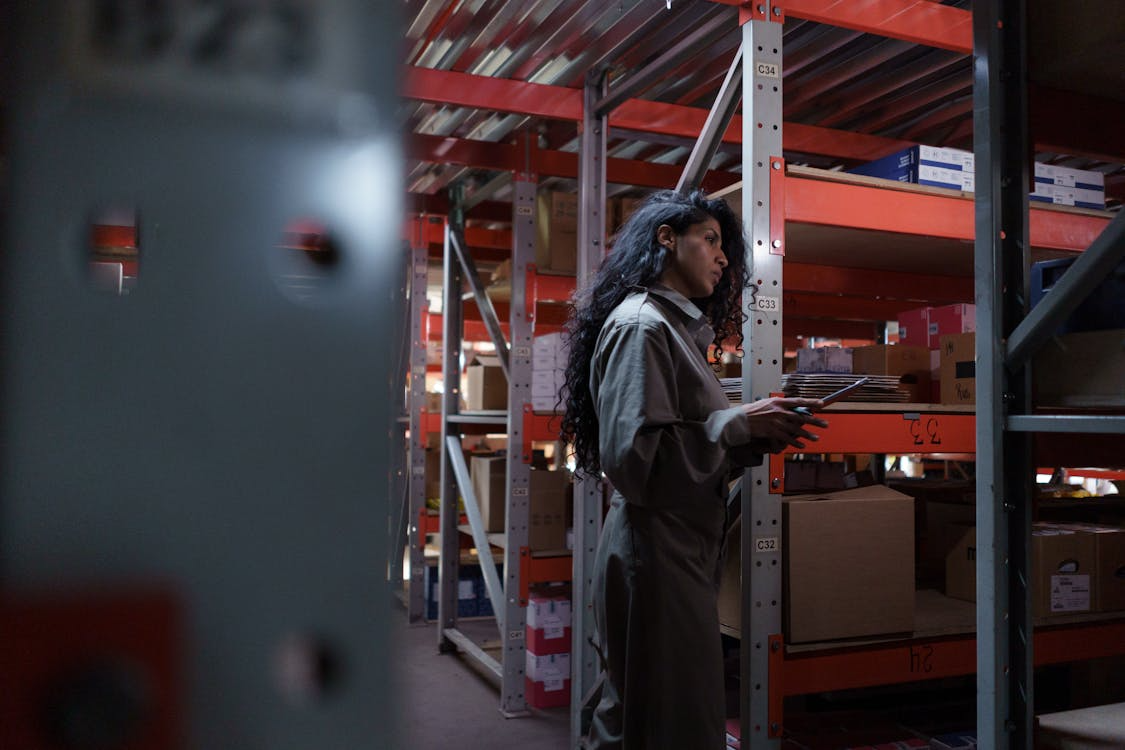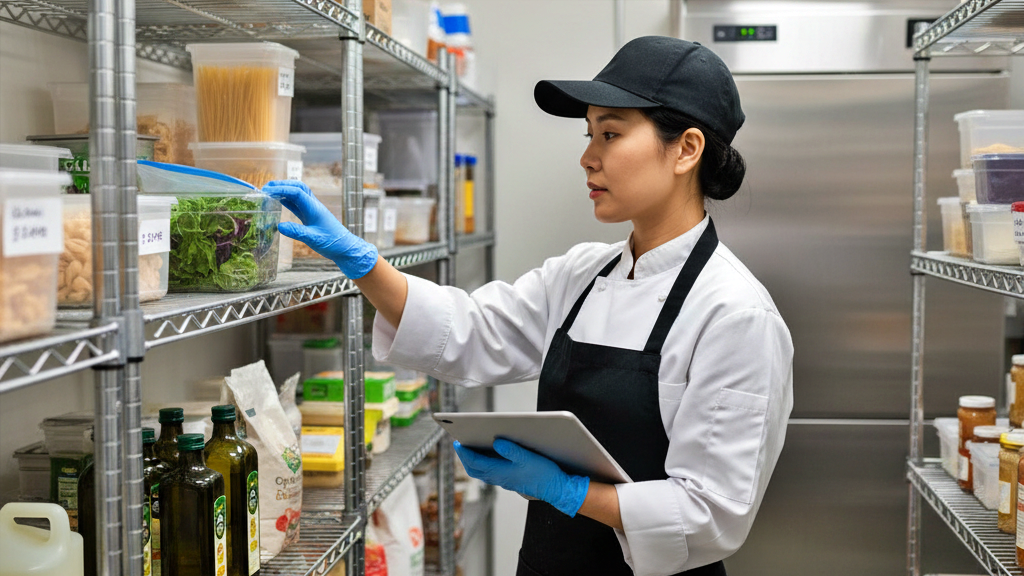Mar 5, 2025
How To Minimize Food Safety Risks
---

As we approach Food Safety Month, it's crucial to discuss strategies for minimizing food safety risks. Implementing preventive measures and controls can significantly reduce the risk of foodborne illnesses, protecting both customers and businesses. This article outlines key steps to ensure food safety, from robust management systems to proper hygiene practices.
Key Takeaways
- Implementing robust food safety management systems is essential for real-time monitoring, clear protocols, and regular audits.
- Training and educating staff through comprehensive programs and ongoing education fosters a culture of food safety.
- Ensuring proper hygiene practices, including hand washing and sanitizing equipment, is crucial for preventing contamination.
- Sourcing and storing ingredients safely by choosing reputable suppliers and monitoring expiry dates helps maintain food quality.
- Conducting regular risk assessments and maintaining accurate records ensures compliance with safety regulations and continuous improvement.
Implementing Robust Food Safety Management Systems
Enhancing food safety benefits customers and safeguards everyone involved in the food handling process downstream. It also protects individuals and animals from potential exposure to foodborne illnesses that might be unintentionally introduced into the food supply chain. A food manager must ensure clear written instructions are in place for which of the following steps in producing safe foods and maintaining the cleanliness of your products:
Utilizing Technology for Real-Time Monitoring
Incorporating advanced technology into your food safety management system allows for real-time monitoring of critical control points. This proactive approach helps in identifying potential issues before they escalate, ensuring that your food products remain safe for consumption. Utilizing predictive analytics and operations management tools can significantly reduce the risk of food safety violations.
.webp)
Establishing Clear Protocols and Procedures
Having well-defined protocols and procedures is essential for maintaining food safety. These guidelines should be documented and easily accessible to all staff members. Clear instructions help in minimizing errors and ensure that everyone is on the same page when it comes to food safety practices. Implementing a food safety management system with daily active managerial control is crucial for reducing critical food safety violations.
Regular Audits and Inspections
Conducting regular audits and inspections is a key factor in maintaining a robust food safety management system. These evaluations help in identifying any gaps or areas that need improvement. Regular checks ensure that all safety protocols are being followed and that the system is functioning as intended. This ongoing vigilance is vital for keeping food safety standards high and protecting your customers from potential hazards.
Training and Educating Staff

Comprehensive Training Programs
Ensuring employees possess adequate knowledge is crucial in preventing food safety issues. Comprehensive food safety training should encompass fundamental hygiene practices, correct food handling procedures, and proper cooking techniques. Training equips staff with the knowledge to prevent common pathogens and ensure a sanitary kitchen.
Ongoing Education and Refresher Courses
Food safety training requires continuous effort to ensure that important protocols remain top-of-mind for all employees. Some brands enhance training with Virtual Reality (VR) to make it more interactive and memorable. Others send reminders directly to employees' smartphones, ensuring they always have critical information readily available.
Creating a Culture of Food Safety
Apart from formal training, it's important to encourage employees to ask questions and seek clarification whenever they are uncertain. Fostering an open communication culture ensures that potential issues are promptly recognized and resolved. Digital checklists are crucial for minimizing high employee turnover. Focus on job role knowledge, systematize tasks, daily training, simplify processes, and utilize employee phones effectively.
Related: Digital Checklists are More Important Than Ever To Minimize the Effects of High Employee Turnover
Ensuring Proper Hygiene Practices
Maintaining high standards of personal hygiene is crucial in any food establishment. Handwashing and Personal Hygiene are fundamental to preventing the spread of infectious diseases. Regular and thorough handwashing, along with the use of hairnets and gloves, can significantly reduce the risk of contamination. Sanitizing Equipment and Surfaces is another critical aspect. Proper sanitation methods should be followed meticulously to ensure that all utensils, equipment, and food contact surfaces are free from harmful pathogens. Lastly, Proper Food Handling Techniques must be adhered to at all times. This includes maintaining cleanliness during food preparation and ensuring that food is cooked to the appropriate temperatures to eliminate any potential hazards.
Sourcing and Storing Ingredients Safely
Ensuring the safety of your food starts with choosing reputable suppliers. It's crucial to conduct thorough reviews to confirm that your suppliers adhere to stringent food safety standards, including proper refrigeration and hygiene practices. This step helps mitigate risks that you can't control, such as chemical hazards in raw ingredients.
Proper storage conditions are equally important. Temperature control is key to preventing food from spoiling or developing harmful microbial growth. Each ingredient has a specific temperature range that must be maintained to ensure its safety. Often, this means refrigerating items at precise temperatures.
Monitoring expiry dates is another essential practice. Regularly check and rotate your stock to ensure that no expired items are used. This not only maintains the quality of your food but also reduces the risk of food borne illness.

Preventing Cross-Contamination
Cross-contamination, where contaminants transfer between contaminated and uncontaminated products through hands and surfaces, is a frequent cause of foodborne illnesses. Adhering strictly to good manufacturing practices and proper handling procedures is essential to mitigate these risks effectively. Cleaning and sanitizing are critical preventative measures for food safety. All surfaces that come into contact with food must be cleaned and sanitized regularly to prevent the spread of foodborne illness.
Conducting Regular Risk Assessments
Regular risk assessments are crucial for maintaining food safety standards. By identifying potential hazards, you can proactively address issues before they become significant problems. Evaluating control measures ensures that your safety protocols are effective and up-to-date. It's essential to update safety plans regularly to adapt to new challenges and changes in the food industry. This process emphasizes due care procedures for issue remediation, ensuring that your establishment remains compliant with food safety regulations.
Related: Due Diligence and Due Care for Restaurant Managers
Maintaining Accurate Records and Documentation
Accurate record-keeping is a cornerstone of effective food safety management. Tracking food safety incidents meticulously ensures that any issues are promptly addressed and mitigated. Documenting procedures and protocols not only helps in maintaining consistency but also serves as a reference point for training and audits. Ensuring compliance with regulations is crucial, and having detailed records can significantly aid in demonstrating adherence to standards. An open letter to the FDA & the National Restaurant Association emphasizes the importance of transitioning to digital record-keeping for accountability and safety. The importance of documentation and daily inspections in the food industry cannot be overstated, as they are vital for maintaining high safety standards and accountability.
Conclusion

Minimizing food safety risks is an essential responsibility for anyone involved in the food industry. By implementing robust management systems, utilizing technology tools, and fostering a culture of accountability, businesses can significantly reduce the chances of foodborne illnesses. Preventive measures, such as maintaining good hygiene practices, developing comprehensive food safety plans, and eliminating common causes of contamination, are critical steps in this process. Continuous improvement and vigilance are key to ensuring that food safety standards are met and maintained. Ultimately, these efforts not only protect consumers but also safeguard the reputation and profitability of food businesses.
Ready to Improve Your Operations?
Get our FREE checklists to streamline processes, boost efficiency, and save time.



